Illustration workshop at Cambridge Botanic Gardens
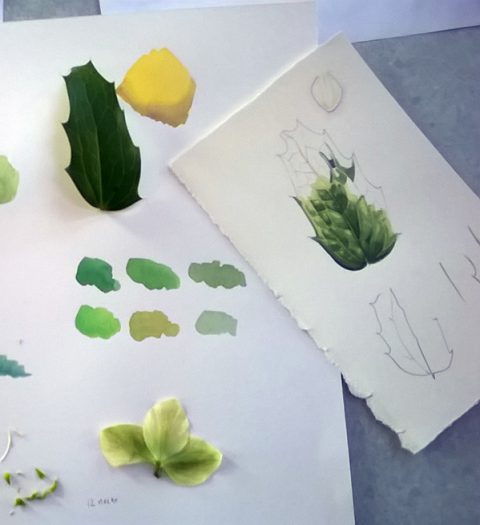
This week I had the good fortune to be asked to teach a course of botanical illustration for beginners, at the Cambridge University Botanic Gardens. I planned the day’s course, taking elements from past sessions of painting workshops.
Preparing for the class
I was so impressed by the classroom preparation and friendly welcome from the staff. There was a spotless room, daylight lighting, neat desks with drawing boards and pots for water neatly laid out for the students, and a gorgeous view onto the lawns and borders and trees in the botanic garden.
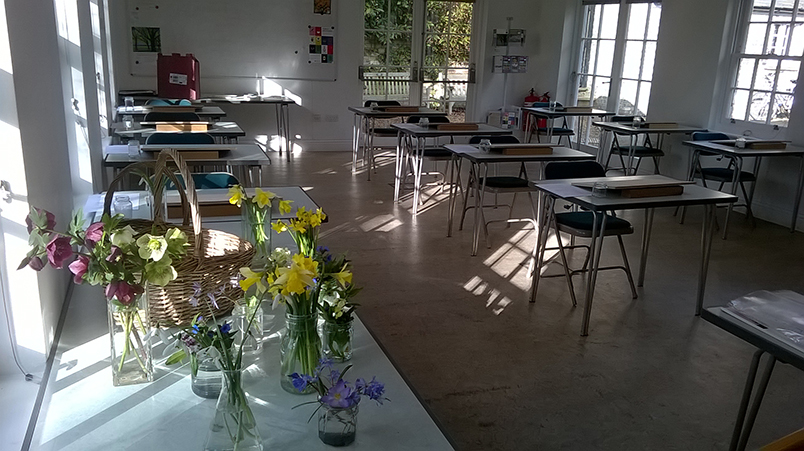
The classroom at the Cambridge Botanic Gardens
Before the students arrived, Felicity (Head of Education at the Gardens ) and I wandered round in the bright spring sunshine. We were gathering flowers to draw. There were stunning hellebores in greenish white and dark magenta. Forget me nots glowing with a dark blue. Plenty of daffodils, sweet-scented mahonia, fragile fruit blossom, and large snowdrops with their blue-green leaves were in bloom. There is plenty to inspire in the botanic gardens. What a wonderful way to start a day.
Gathering reference and learning about flower form
First I talked through a bit of basic flower anatomy with the students. We covered stuff they all knew (familiar terms like petal, bud, leaf and root) and less obvious ones (anther, filament, style and stigma). Then we went for a sunny wander in the garden, looking at the enormous variety of forms that the flowering plants and leaves show. We looked inside daffodils and cut hellebores in half to see the ovary. We removed outer petals from snowdrops, and were blown away by a gorgeous cyclamen leaf.
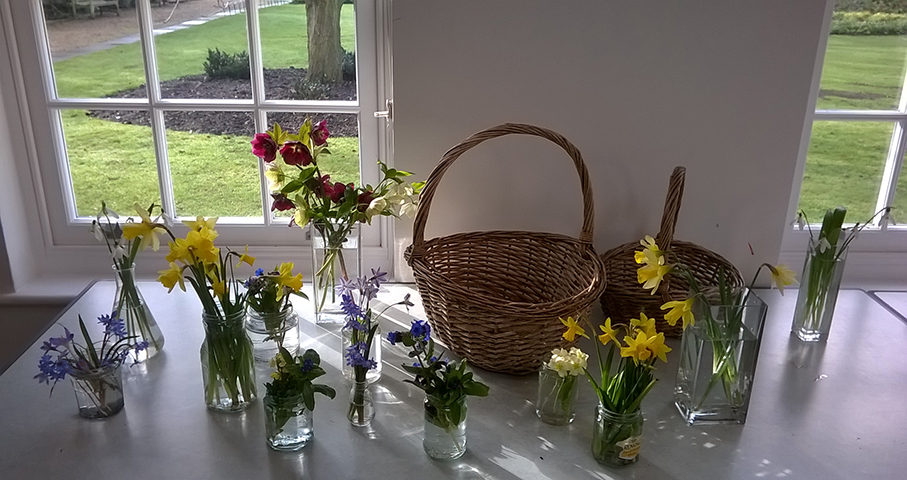
Flowers from the botanic gardens for the students to look at, draw, and pull apart in our quest to see how they’re “built”
Line drawings
Back in the classroom we talked about atonal line drawings. These avoid using lights and darks, and just involve drawing the shapes and relationship between different parts of the plants. I did a demo showing how to “map” a plant on a page, then how you can return to it to add detail.

Drawing with plant
The whole class spent the rest of the morning doing some beautiful observational line drawings. Hellebores and daffodils were popular subjects, and the students did an excellent job of taking on their complicated flowering structures.
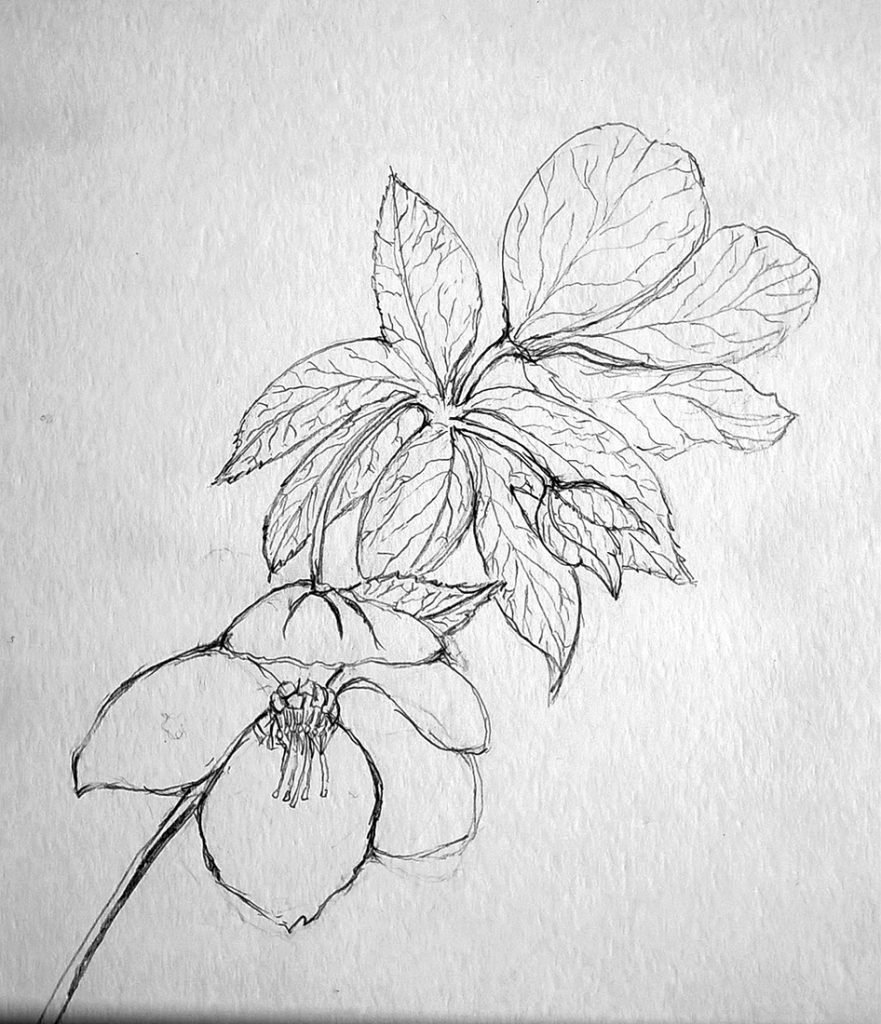
Line drawing of hellebore
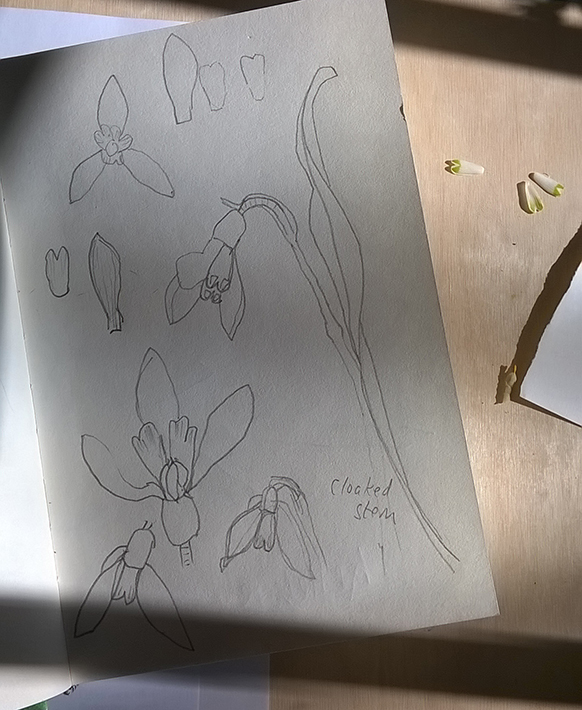
Sketchbook study page of Snowdrops
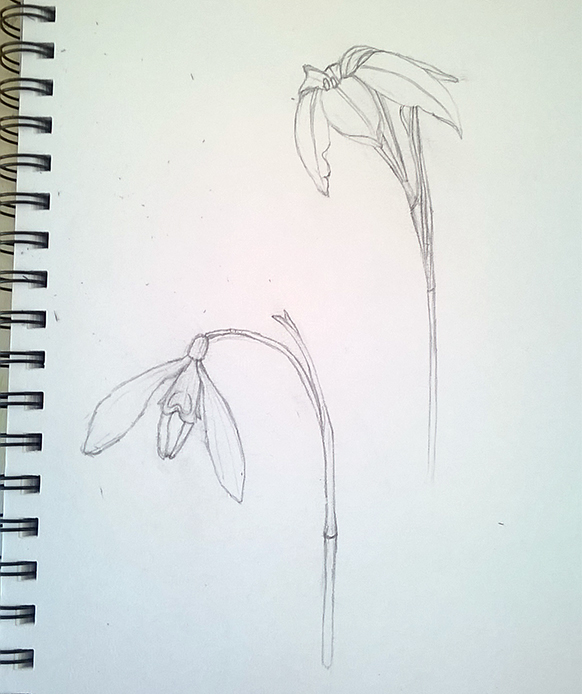
Student line drawings
Tonal studies
After lunch, spent wandering the botanic gardens, we moved onto talking about shadow. We discussed how to see areas of dark, and why those areas looked darker. Another tutor demo, then they all got to work. They really got their eye in. Correctly pinpointing tiny gradations in tonal value, and carefully recording them in their drawings is tough. The students nailed it. I was particularly impressed by how they managed to avoid making their drawings a flat uniform grey. This often happens with tonal studies if you don’t keep your whites clear of pencil. Unfortunately, I failed to take many photos of their work as I was too busy peering over their shoulders and interfering….
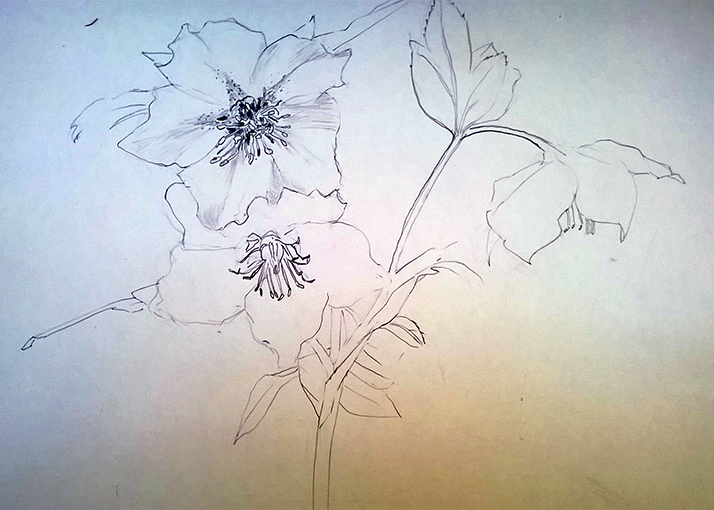
Student tonal drawing of Hellebore flower
Learning to use watercolour
Next there were some watercolour excersizes. Firstly making a colour paler by diluting it with water (not mixing it with white). One of the students noted that by diluting it you were allowing more of the white of the page to show through. This is a perfect and new way to explain the process.
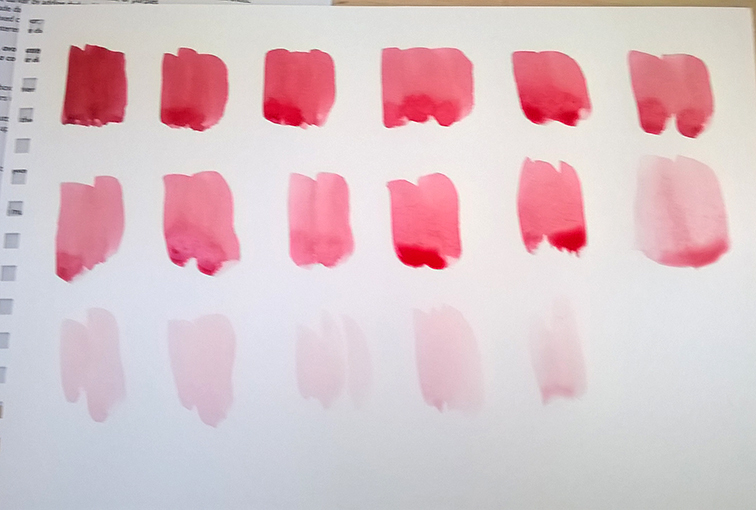
Series dilution of Crimson by a student
Darkening a colour is less prescriptive, and I suggested they play about to see what mixes they could come up with. Some gorgeous dark rich reds and green yellows ensued. These colours are so much deeper and fuller than if your base colour was simply mixed with black. Finally, we experimented with mixing greens as watercolour tube/pan greens tend to have very little to do with the colours of nature. They excelled at this.
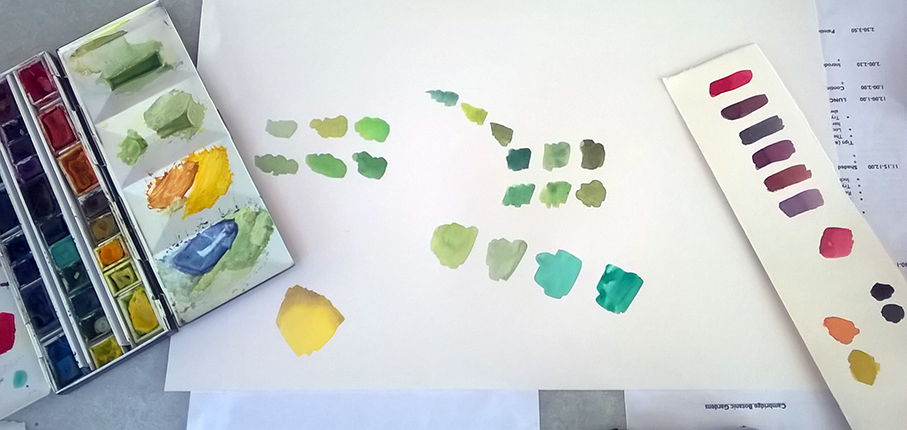
Watercolour illustration of a flower
Next was a watercolour of a plant. I did a quick demo of painting a leaf. Explaining that my way of blocking in darks then working to light before returning to pick out the darkest detail is unconventional in botanical illustration circles is a neccessity. I always stress this in case they get told off on other courses!).
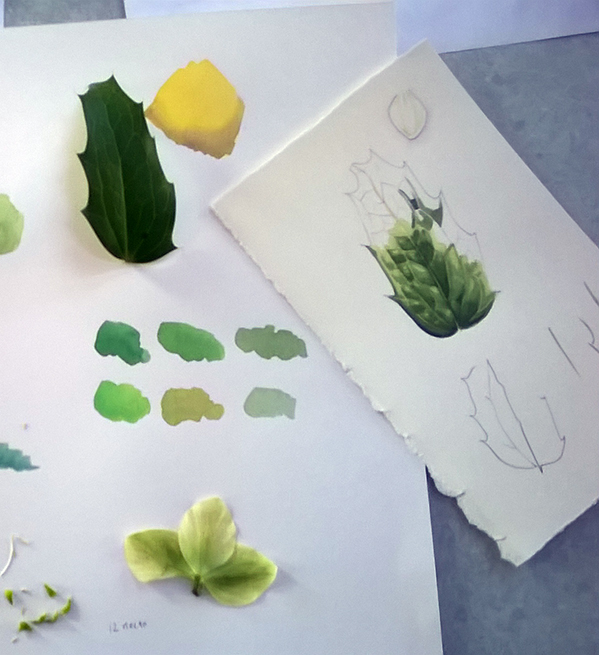
Tutor leaf painting demo (and bits of a hellebore flower)
I was deeply impressed by their work, many of the students claimed not to be able to draw, or to have very limited experience. Their paintings belied this fact. There were some very delicate stems, daffodil trumpets, and green-whites of hellebore leaves. Some students tackled the prickly problem of painting white flowers. Others managed to accurately make a stem look flushed with crimson. A few managed to make the blue of their flowers glow against the page. Unfortunately I was too busy rushing about looking at their work to take many photos of their lovely paintings, but here is a study of a snowdrop.
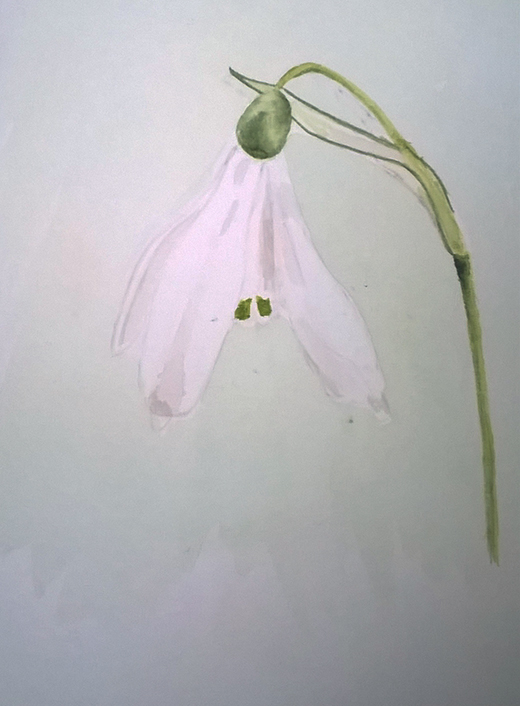
Student watercolour of a snowdrop
At the end of the day I think they were exhausted. The idea that drawing is “relaxing” is the biggest fib out there! They seemed pleased with their work. I was really inspired by their fortitude and patience, and very impressed with their drawings and paintings.
Learning from the students
As with all teaching sessions the students taught me an enormous amount. We had excellent discussions about trying to tell the difference between tonal difference due to shadow vs to a dark colour. I learnt masses about the internal structure of hellebores (and their individual variations). The group figured out how daffodils were built, and discussed how tricky it was to darken a yellow without making it green or orange. Everyone agreed that the state of intense concentration one enters when looking and drawing incredibly hard could definitely be seen as “mindfulness”. The main lesson seemed to be that to be able to draw, you need to be able to look. The skill is to record what is actually there rather than what your brain suggests might be there.
It was a highly enjoyable day in a stunning place, and I’m really looking forward to my autumn session at the Botanic Gardens. Two days of drawing and painting autumn leaves and fruits, and of really looking at them and seeing how they are put together. Feel free to click on the link and book if you’d like to join us!

